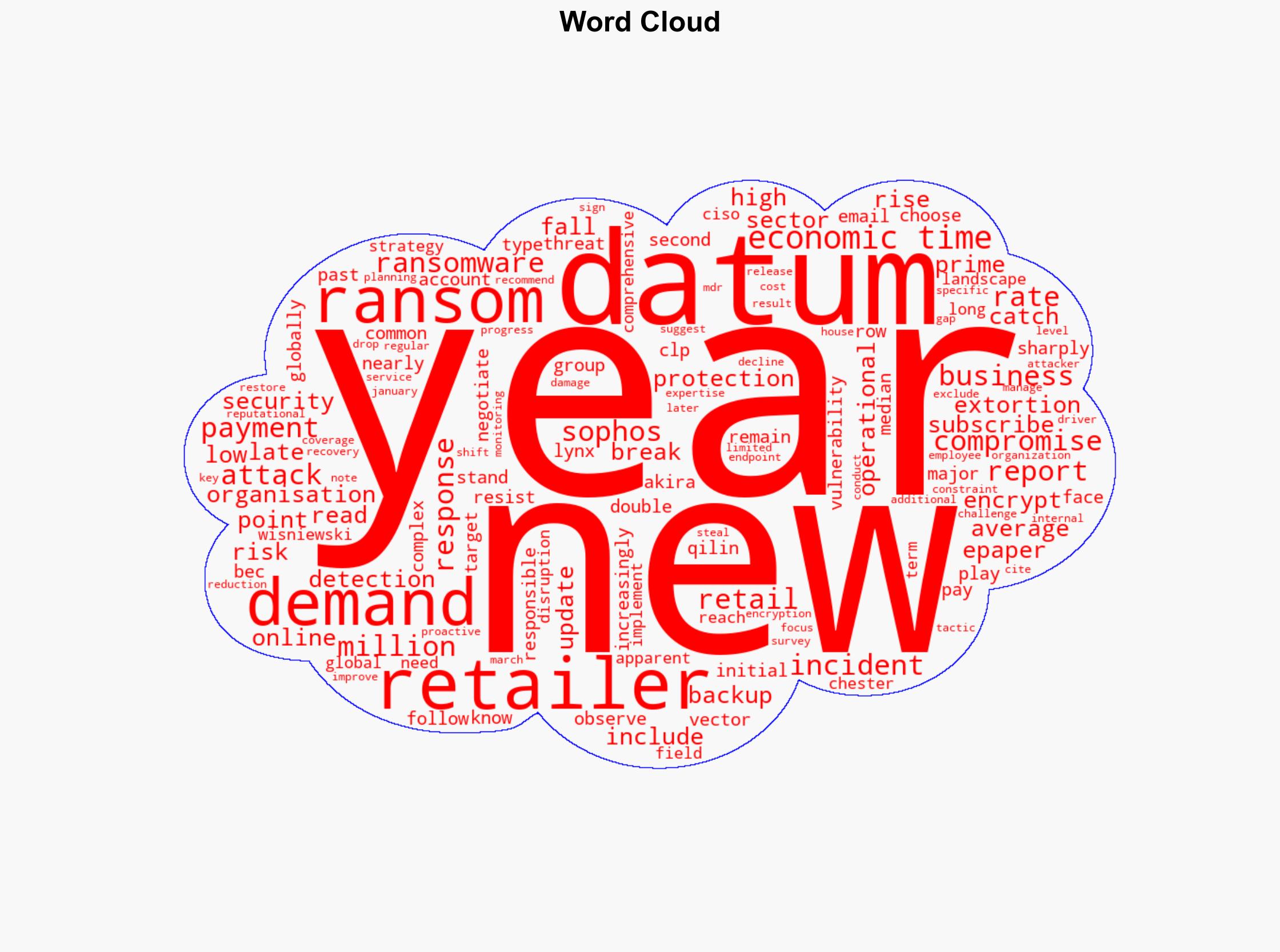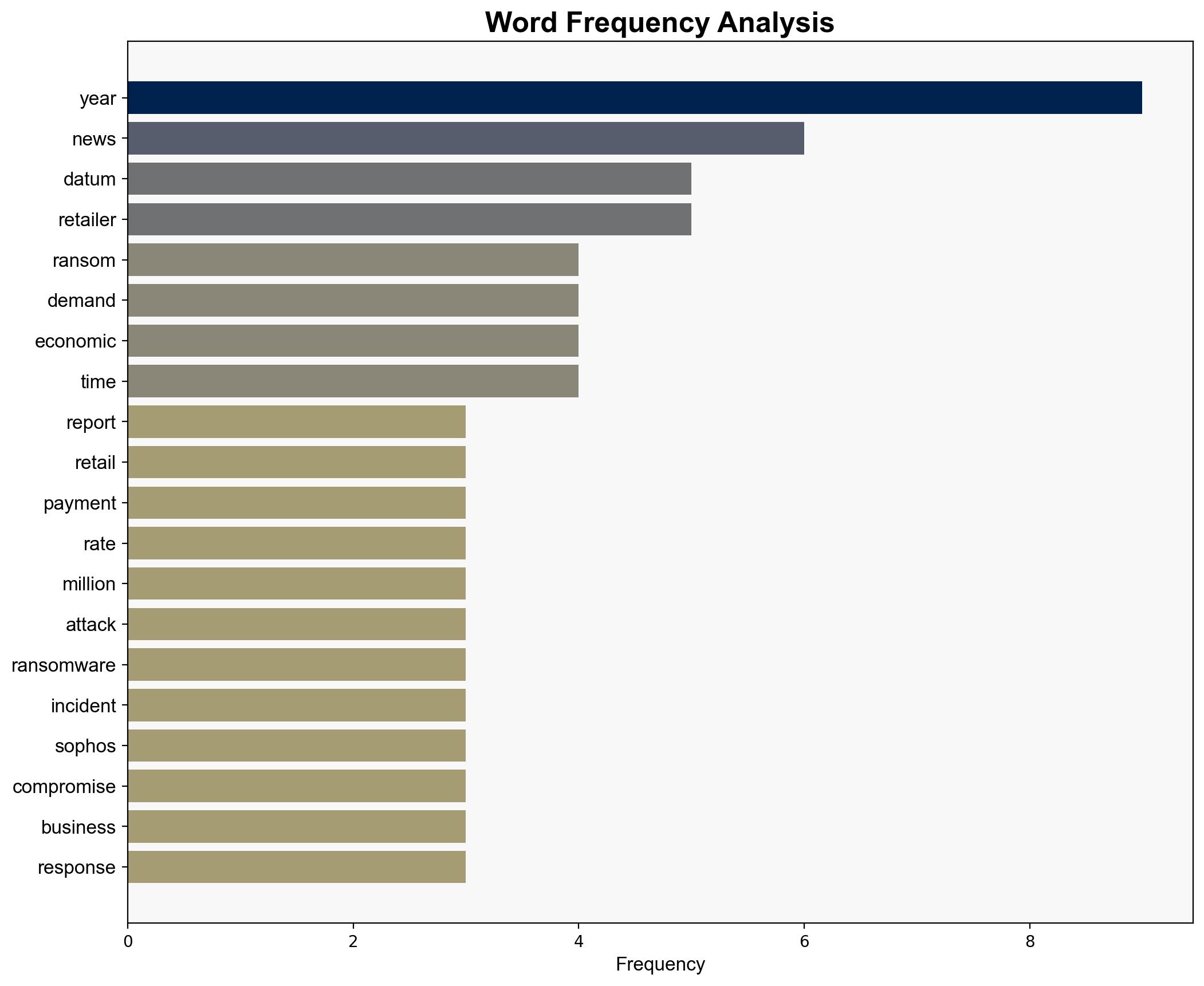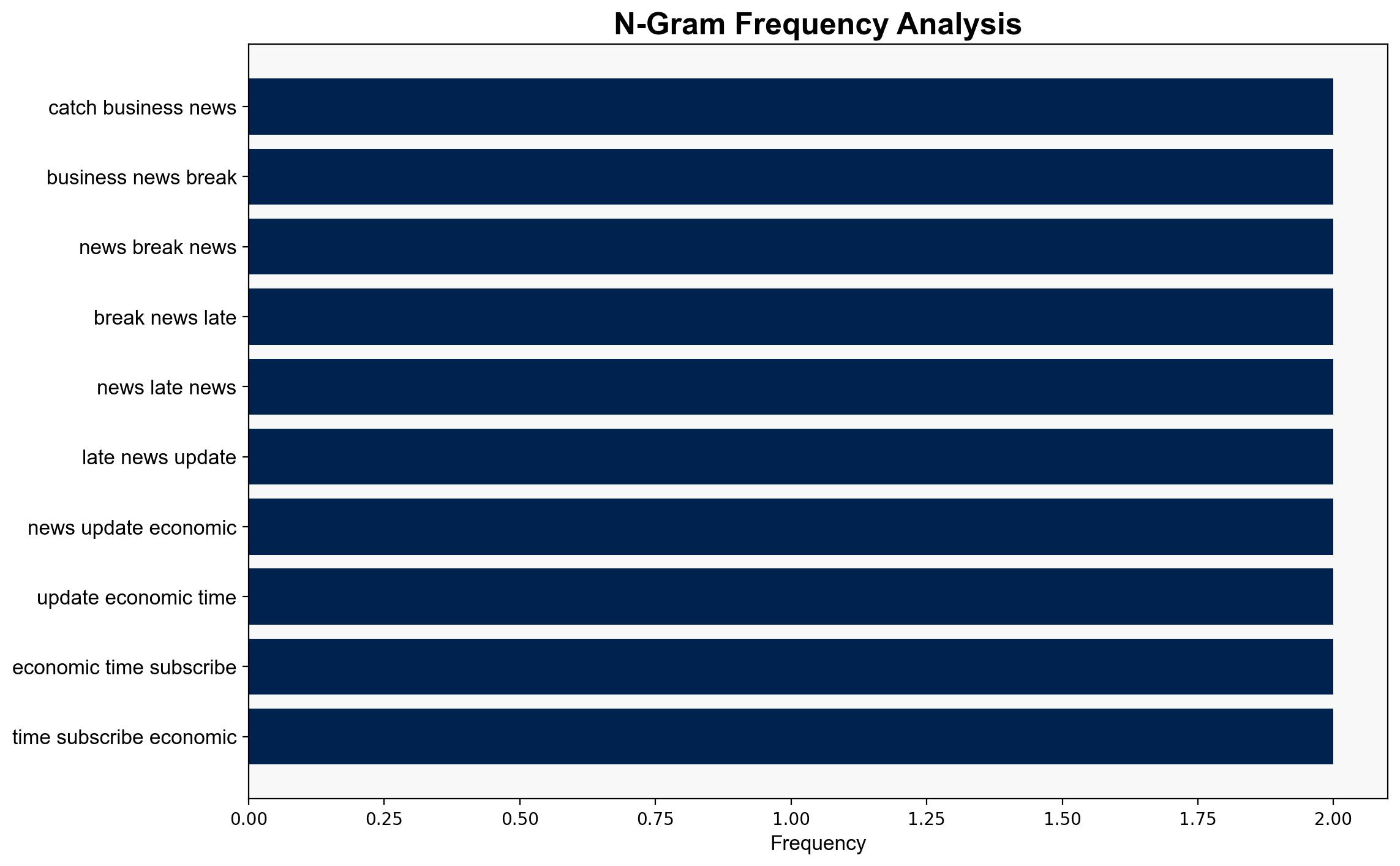Nearly half of retail ransomware attacks stem from unknown security gaps Report – The Times of India
Published on: 2025-11-05
Intelligence Report: Nearly half of retail ransomware attacks stem from unknown security gaps Report – The Times of India
1. BLUF (Bottom Line Up Front)
The most supported hypothesis is that retail organizations are primarily targeted due to unknown security gaps, exacerbated by limited in-house expertise and evolving ransomware tactics. Confidence level: Moderate. Recommended action: Retailers should enhance endpoint protection, invest in incident response planning, and consider managed detection and response services to mitigate these vulnerabilities.
2. Competing Hypotheses
1. **Hypothesis A**: Retail ransomware attacks are primarily due to unknown security gaps within organizations, compounded by limited internal expertise and evolving ransomware tactics.
2. **Hypothesis B**: Retail ransomware attacks are primarily driven by attackers exploiting known vulnerabilities, with organizations failing to implement effective patch management and security protocols.
Using ACH 2.0, Hypothesis A is better supported by the evidence of nearly half of the attacks stemming from unknown security gaps and the noted lack of in-house expertise. Hypothesis B is less supported as the report emphasizes unknown gaps rather than known vulnerabilities.
3. Key Assumptions and Red Flags
– **Assumptions**: The report assumes that unknown security gaps are the primary vector for attacks without considering the possibility of misreported or misunderstood vulnerabilities.
– **Red Flags**: The data on the exact nature of these unknown gaps is vague, raising questions about the accuracy of the attribution.
– **Blind Spots**: The report does not address the potential for insider threats or the role of third-party vendors in security breaches.
4. Implications and Strategic Risks
The persistence of unknown security gaps suggests a potential for increased ransomware incidents, leading to significant operational disruptions and reputational damage. The evolving tactics of ransomware groups, such as data theft and extortion, could escalate financial and legal risks for retailers. The economic impact could extend to consumer trust and market stability.
5. Recommendations and Outlook
- Retailers should prioritize identifying and addressing unknown security gaps through comprehensive audits and penetration testing.
- Invest in employee training to enhance internal expertise and awareness of evolving cyber threats.
- Implement robust incident response plans and consider managed detection and response services.
- Scenario Projections:
- **Best Case**: Retailers successfully mitigate unknown gaps, reducing ransomware incidents by 50% within a year.
- **Worst Case**: Failure to address gaps leads to a 30% increase in ransomware incidents, causing significant financial losses.
- **Most Likely**: Gradual improvement in security measures reduces incidents by 20% over the next year.
6. Key Individuals and Entities
Chester Wisniewski is mentioned as a key individual providing insights into the ransomware threat landscape.
7. Thematic Tags
national security threats, cybersecurity, retail sector, ransomware, risk management





